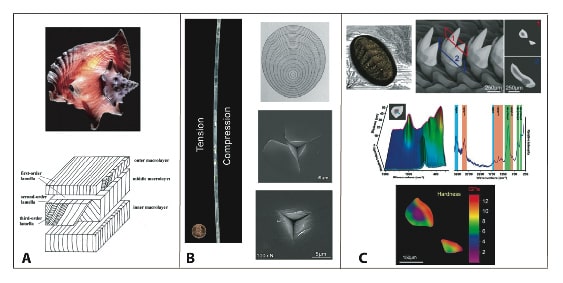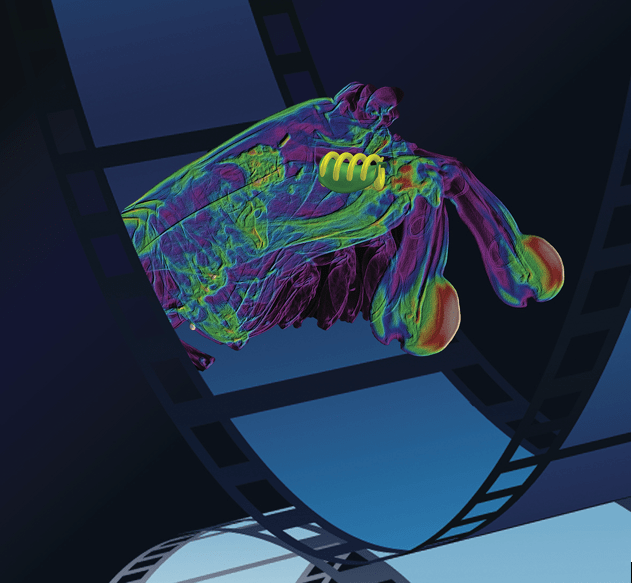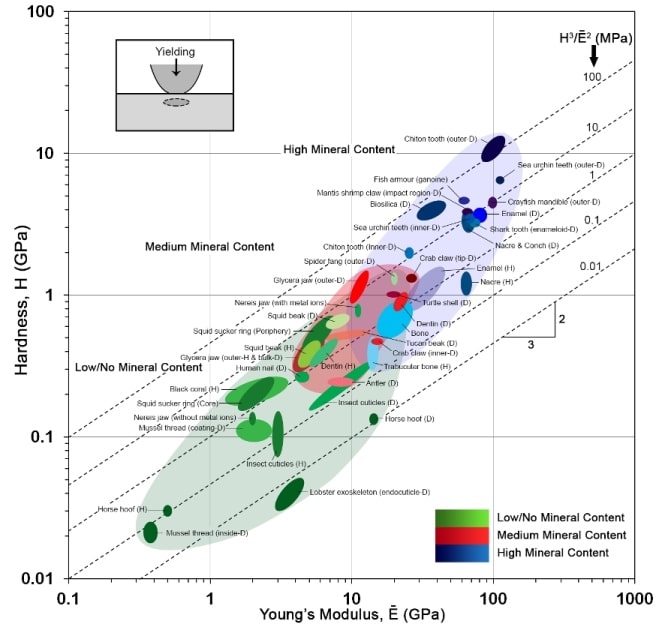Hierarchical bio-mineralized composites with calcified phases (calcium carbonate and calcium phosphates) such as seashells (conch shell and mother-of-pearl) are classic examples of biomimetic research studies. Extensive studies in the past unveil that natural structures feature mechanical strength by exploiting a variety of toughening mechanisms across multiple length scales.
Recently, there's a shift in research focus on novel-intriguing structural materials made of unexpected inorganic materials (for instance Fe, Cu, Au or oxides). The materials often contain a combination of minerals, assembled in a highly controlled manner for precisely tailored functionalities. We have been investigating such systems, including the dactyl club of the mantis shrimp; the silica-based giant sponges - revealing the critical influence of lamellar architecture on abrasion damage (Advanced Functional Materials, 2008), and on the magnetite-based chiton teeth. In the latter system, we illustrated that chiton magnetite constitutes the hardest biomineral found in Nature (Materials Today, 2010), with the focus on contact mechanics studies at small scales (including indentation fracture). We have directed efforts to develop in situ mechanical testing methods (for instance under an SEM or a TEM) to reveal fundamental mechanisms of toughening, together with assessing the influence of organic-inorganic interfaces on the properties.



